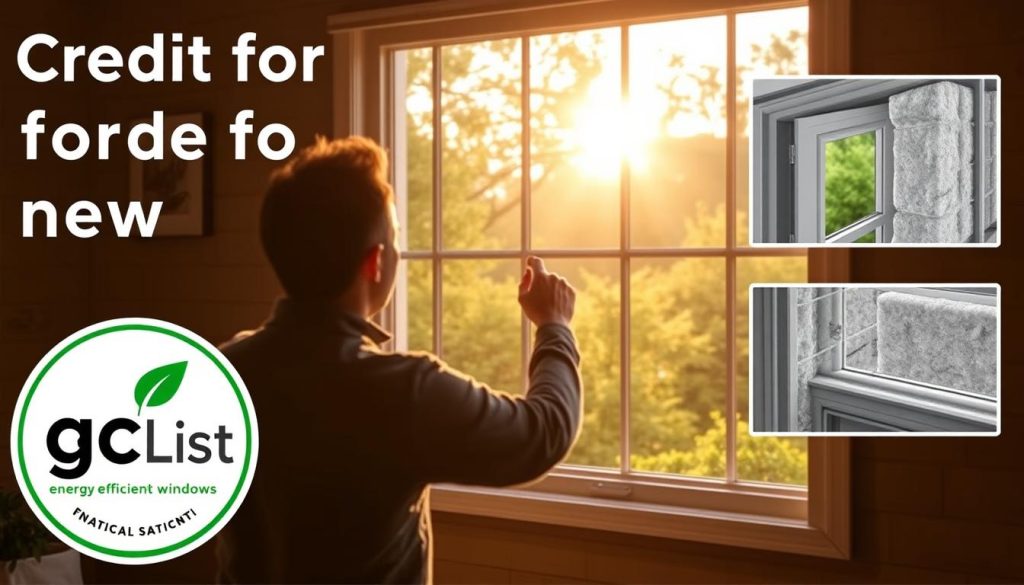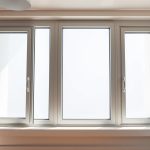Did you know you can get a credit for new windows? This can cut your energy costs by up to 30 percent. Homeowners can get up to $3,200 a year in federal income tax credits. You can also look into window financing options and affordable window loans1.
This article will guide you on how to claim green rebates for new windows. It will help you save money with credit for new windows and window financing options.
Introduction to Green Rebates
Homeowners can visit https://gclist.us or call 279-777-6529 for more info on rebates and loans. They can learn about the benefits of green rebates for new windows. This includes credit for new windows and window financing options2.
Key Takeaways
- Claim green rebates for new windows to reduce energy costs
- Explore window financing options and affordable window loans
- Visit https://gclist.us for more information on claiming rebates
- Contact 279-777-6529 for assistance with the rebate process
- Maximize savings with federal income tax credits and credit for new windows
- Learn about the benefits of energy-efficient windows and window financing options
Understanding Green Rebates for New Windows
Upgrading to energy-efficient windows can save you money on your utility bills. You can get help with the cost through low interest window credit. The government also offers tax credits for making your home more energy-efficient, including new windows3.
Energy-efficient windows cut down on energy use and make your home more comfortable. You can also find financing options to make the upgrade more affordable. Here are some important things to know about green rebates for new windows:
- Financing new windows can be made more affordable through window replacement financing options
- Low interest window credit can help homeowners cover the costs of their upgrades
- Green rebates can help offset the cost of energy-efficient upgrades, making them more affordable
The Inflation Reduction Act of 2022 extended tax credits for energy-efficient home improvements until 20324. You can even claim tax credits for upgrades made as far back as 20173. The Energy Efficient Home Improvement Tax Credit allows claims of up to $3,200 per year for qualifying home improvements through 20325.
Eligibility Criteria for Rebates
To get green rebates, homeowners need to meet certain criteria. This includes the type of windows they install and how energy-efficient they are6. They can finance their new windows in different ways, like through window upgrade financing or financing energy-efficient windows. Knowing what you qualify for and the financing options can help you save more.
Installing energy-efficient windows can get you a tax credit of up to $1,200. There’s no limit on how much you can claim for energy-efficient home improvements6. You can also get credits for improvements on a second home you use part-time, except for fuel cell properties6. The Residential Clean Energy tax credit is available from 2022 to 2032, with a decrease in 2033 and 20346.
The rebate program covers certain types of windows:
- Energy-efficient windows with a U-factor of 0.30 or less
- Windows with a Solar Heat Gain Coefficient (SHGC) of 0.30 or less
- Windows with a minimum R-value of 3.0
You can also get credits for other energy-efficient upgrades, like insulation and air sealing. These can be up to $1,2007. The limit for exterior windows and skylights is $600. There’s no extra limit for insulation and air sealing beyond the $1,200 maximum7.
Remember, the energy efficient home improvement credit is nonrefundable. It can’t lower your tax bill below zero, and any leftover credit can’t be used for future bills7. It’s wise to talk to a tax professional to figure out the best way to claim your credits and save more.
How to Start the Application Process
To start, homeowners need to check if they qualify for green rebates8. They must see if their new windows are Energy Star Most Efficient certified8. It’s also wise to talk to a professional contractor to pick the right windows for their home. Windows installed in 2024 can be claimed on 2024 taxes, filed in 20258.
Choosing the right windows is key. Look at the U-factor and solar heat gain coefficient (SHGC)9. A low U-factor helps in cold weather, and a low SHGC helps in warm weather9. It’s also important to install windows correctly to keep them energy-efficient and avoid warranty issues9. Some important steps include:
- Checking eligibility for rebates
- Ensuring new windows meet Energy Star Most Efficient certification standards8
- Consulting with a professional contractor
- Understanding U-factor and SHGC9
By taking these steps and considering the right factors, homeowners can start the application process for green rebates. They will enjoy the benefits of energy-efficient windows89.
Steps to Apply for Green Rebates
To get green rebates, start by collecting needed documents. This includes receipts and statements from your installer10. These prove your new windows are energy-efficient and you qualify for the rebate. Then, you can apply and enjoy benefits like credit, financing, and loans for your windows.
When applying, remember the tax credit for energy-efficient upgrades can be up to $3,20010. The credit is 30% of the cost of improvements made in the year11. Also, there are limits on how much you can get, like $250 for exterior doors and $500 total for windows and skylights10.
Here are some steps to follow when applying for green rebates:
- Gather required documentation, including receipts and certification statements from the installer
- Submit the application, following the steps outlined in the web source
- Take advantage of credit for new windows, window financing options, and affordable window loans
By following these steps and considering the available credit, financing, and loans, homeowners can save money and reduce energy use12.
Maximizing Your Savings
Choosing energy-efficient windows involves looking at energy use, durability, and upkeep costs. Options like low interest window credit can help with the cost of window replacement financing. This makes it easier to upgrade to energy-saving windows. Knowing about incentives and financing can help you save more.
Homeowners can save by using both local and federal incentives. For instance, there’s a tax credit for homeowners of 10% of the cost of windows and doors, up to $600 for windows and $500 for doors13. Also, the 2025 Insulation Tax Credit lets homeowners claim 30% of certain expenses for energy-efficient home improvements, with a cap of $1,20014.
Here are some tips for picking energy-efficient windows:
- Look for windows that meet Energy Star 7.0 standards, based on U-value and SHGC13
- Think about the cost of financing new windows and look into window replacement financing options
- Use both local and federal incentives to save more
By following these tips and using available incentives, homeowners can save money and make their homes more energy-efficient.
Common Questions About Rebates
Homeowners often wonder about the rebate process. They ask how long it takes to get their rebates and what to do if they’re denied. The process of financing new home windows can seem complex. But knowing the basics can help.
Households making up to 150% of their local area median income can get Home Electrification and Appliance Rebates (HEAR)15. This info helps homeowners plan their window financing better.
Financing energy-efficient windows requires knowing the processing times and procedures. Rebate programs are set to start in late 2024 in many states15. Retroactive reimbursements for HER projects can be applied if work started on or after August 16, 202215.
Tax credits under the expanded energy efficient home improvement credit (25C) allow for deductions of up to 30% of qualified energy efficiency improvements through 203216. This can help homeowners save more on their window upgrades.
Some common questions about rebates include:
- How long do rebates take to process?
- What if my application is denied?
- Can I combine local and federal incentives?
Knowing the answers to these questions helps homeowners navigate the rebate process. It makes the most of their window upgrade financing and finance new home windows. By financing energy-efficient windows, homeowners can save money and reduce their environmental impact.

Resources for Consumers
Homeowners can find many resources to help with new windows and doors rebates. These include state and local programs that offer credit for new windows and window financing options. These resources give valuable info and help homeowners save money.
Some resources available are:
- Government websites with info on affordable window loans and tax credits
- Non-profit groups that help with energy-efficient home upgrades
- Local contractors who advise on the best window financing options
The Energy Efficient Home Improvement Credit lets homeowners claim 30% of qualifying costs, up to $1,200 a year17. Also, the Residential Clean Energy Tax Credit gives a 30% return on new clean energy systems, with no spending limit18.
Contacting Experts for Assistance
Homeowners often need help when financing new windows. This is where financing options come in, making upgrades more affordable19. The Energy Efficient Home Improvement Tax Credit (25C) offers a 30% tax credit on home energy audits, up to $150 per year19. For guidance on finding a reliable contractor, visit the GCList blog.
Look for contractors who offer financing options like low interest window credit. This makes the process easier. Professional help ensures a smooth upgrade process20.
When choosing a contractor, consider their experience with energy-efficient windows. Also, check if they provide detailed estimates and timelines. Look for certifications like the Home Energy Score Certified Assessor19. This ensures you’re working with a qualified professional.
Getting expert help is key in the window replacement process. By seeking professional advice and exploring financing options, homeowners can have a stress-free upgrade. They’ll enjoy the benefits of their new windows for years20.
Conclusion: Transforming Your Home and Budget
Investing in new, energy-efficient windows can change your home and budget a lot. You can save money and get long-term benefits. This goes beyond just saving on energy costs21.
New windows can make your home look and feel better. They can increase your property value, make your home more comfortable, and secure. With rebates up to $1,200 per window and financing options, it’s easier to afford21.
Don’t miss this chance to improve your home and save money. Check out GCList for the latest rebates and tips. Start making your home more comfortable, energy-efficient, and financially smart today22.
FAQ
What are green rebates?
Green rebates are incentives from the government. They encourage homeowners to upgrade to energy-efficient items, like new windows. These rebates can make these upgrades more affordable.
What are the benefits of installing energy-efficient windows?
Energy-efficient windows use less energy and lower your bills. They also increase your home’s value.
Who qualifies for the green rebates?
Homeowners need to meet certain criteria to get green rebates. They must install energy-efficient windows to qualify.
What types of windows are covered by the rebates?
Rebates cover energy-efficient windows that meet government standards.
What documentation is required to submit a rebate application?
Homeowners need receipts and certification from their installer. These are required for the rebate application.
How long does it take to receive the rebate?
Rebate processing times vary. Homeowners should be ready to wait weeks or months for their rebate.
What should I do if my rebate application is denied?
If your application is denied, follow the application process. Address any issues and resubmit your application.
What resources are available to help homeowners navigate the rebate process?
Homeowners can find help through state and local programs. Websites and tools are also available to guide them.
When should I seek professional help for the rebate process or window installation?
You might need professional help for the rebate process or window installation. This ensures your windows meet the criteria.
Source Links
- https://energyoffice.colorado.gov/federal-tax-credits-incentives-homes
- https://energyoffice.colorado.gov/ira-rebate-faq
- https://www.constellation.com/energy-101/homeowners-guide-tax-credits-and-rebates.html
- https://home.treasury.gov/news/featured-stories/coordinating-doe-home-energy-rebates-with-energy-efficient-home-improvement-tax-credits-an-explainer
- https://www.cleanenergyconnection.org/best-california-energy-rebates-incentives-2025
- https://www.energystar.gov/about/federal-tax-credits
- https://www.nerdwallet.com/article/taxes/energy-efficient-home-improvement-credit
- https://www.improveitusa.com/blog/faq-energy-tax-credit-for-new-windows/
- https://www.energy.gov/energysaver/update-or-replace-windows
- https://www.irs.gov/credits-deductions/energy-efficient-home-improvement-credit
- https://www.energystar.gov/about/federal-tax-credits/windows-skylights
- https://www.energy.gov/save/home-upgrades
- https://www.cswindows.com/blog/maximize-your-savings-with-the-energy-star-7-0-tax-credit-for-windows-and-doors/
- https://www.taxfyle.com/blog/2023-insulation-tax-credit
- https://www.nytimes.com/wirecutter/reviews/home-energy-rebates/
- https://www.energy.gov/policy/articles/making-our-homes-more-efficient-clean-energy-tax-credits-consumers
- https://www.irs.gov/credits-deductions/home-energy-tax-credits
- https://www.nrdc.org/stories/consumer-guide-inflation-reduction-act
- https://www.energy.gov/energysaver/professional-home-energy-assessments
- https://www.hunterdouglas.com/tax-credit
- https://www.ezwindowsolutions.com/replacement-windows/how-to-finance-your-window-replacement-project/
- https://www.familyhandyman.com/article/how-to-take-advantage-of-the-incentives-in-the-inflation-reduction-act/?srsltid=AfmBOorjzZdaBOKsPo_rfja0paxE4U2PXA1ZmwuN_RVE7Ty-pqaqeywc


